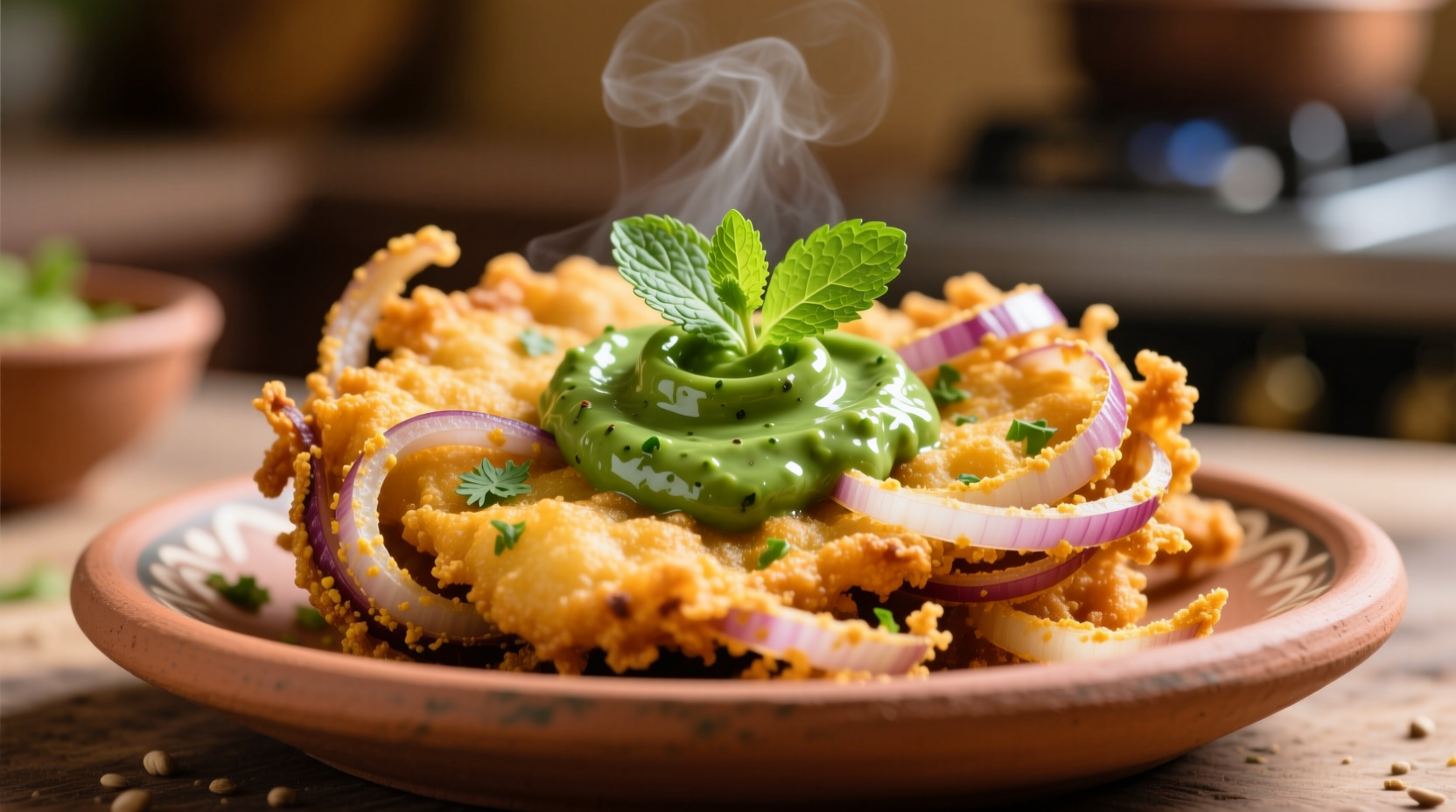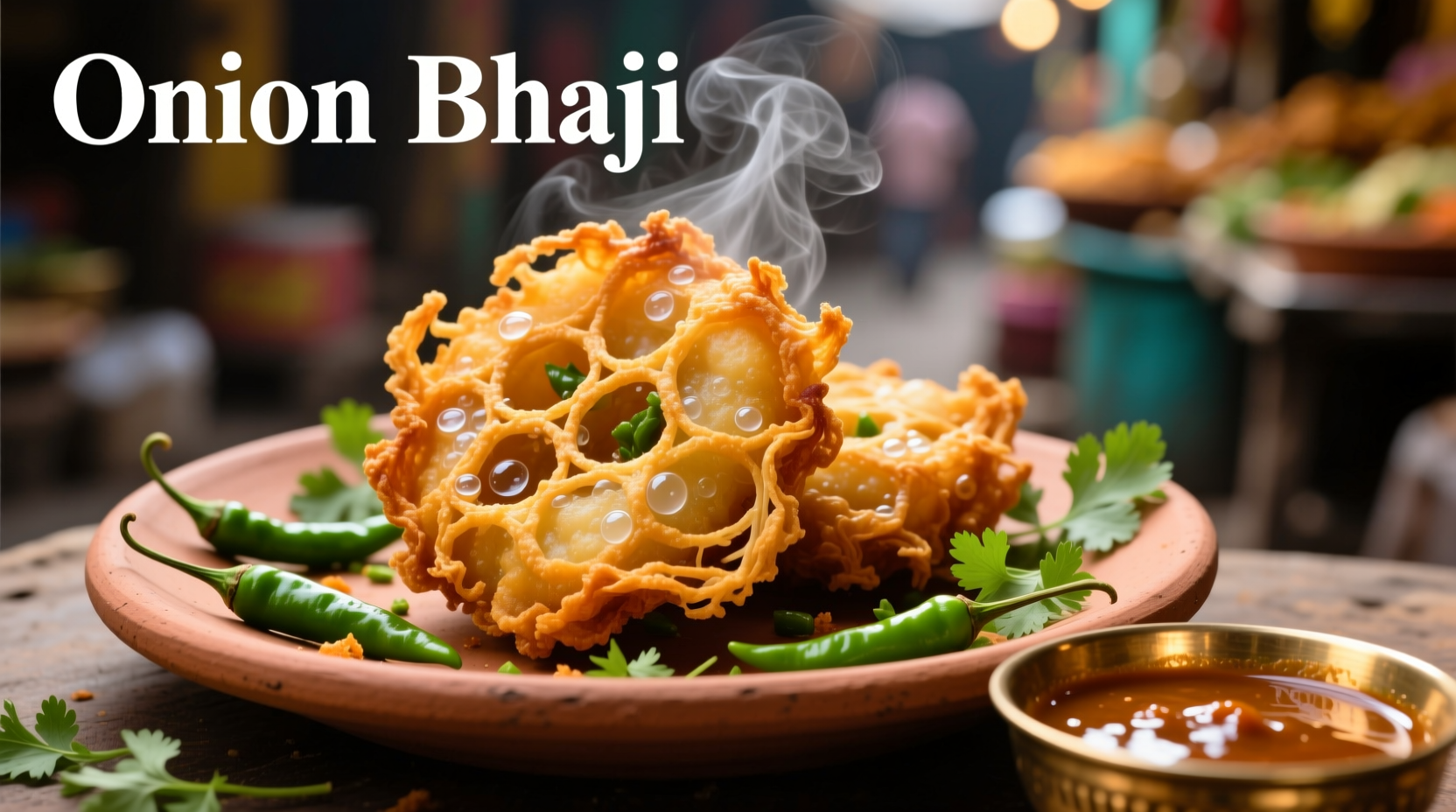Onion bhaji is a beloved Indian snack consisting of thinly sliced onions dipped in spiced chickpea flour batter and deep-fried until golden and crispy. This authentic recipe delivers perfectly crisp bhajis with balanced spices, achieved through proper batter consistency, oil temperature control, and traditional spice combinations used across Indian households for generations.
Craving that perfect crunch and aromatic flavor of authentic onion bhaji but ending up with soggy or bland results? You're not alone. Many home cooks struggle with this popular Indian street food, not realizing that just three critical factors determine success: the right chickpea flour-to-liquid ratio, precise oil temperature (350-375°F), and proper spice blooming technique. Get these elements right, and you'll create restaurant-quality onion bhajis that stay crispy for hours—not minutes.
The Cultural Roots of Onion Bhaji
While street food versions dominate modern perception, onion bhaji's origins trace back to traditional Indian home cooking where resourcefulness met flavor. Historical records in The Art of Indian Cooking by Tarla Dalal document how chickpea flour (besan) became a staple binding agent in Indian frying traditions after chickpeas were introduced to the subcontinent via ancient spice trade routes. Unlike Western fritters that often use wheat flour, besan provides superior crispness and nutty flavor that complements onions perfectly.
| Ingredient | Traditional Purpose | Modern Substitution |
|---|---|---|
| Chickpea flour (besan) | Creates crisp texture, neutral base for spices | Rice flour (less authentic but gluten-free) |
| Fresh curry leaves | Adds citrusy depth, traditional in South India | Dry curry leaves (use 1/3 amount) |
| Asafoetida (hing) | Digestive aid, umami booster (essential for authenticity) | Garlic powder (less traditional) |
Why Your Onion Bhaji Recipe Fails (And How to Fix It)
Most home cooks make one critical mistake: overcomplicating the batter. Authentic onion bhaji requires just six ingredients with precise ratios. The perfect batter should coat onions without dripping—thick enough to cling, thin enough to fry evenly. Too much liquid creates soggy bhajis; too little prevents proper coating.
Professional chefs at Mumbai's famous street food stalls follow a simple 3:1 ratio: three parts besan to one part liquid (water or buttermilk). Buttermilk's acidity reacts with besan for extra crispness, while water yields a more neutral flavor. For best results, mix batter just before frying—chickpea flour absorbs liquid over time, requiring adjustment.

Step-by-Step Perfect Onion Bhaji Method
Prep onions properly: Slice onions 1/8-inch thick using a mandoline for consistency. Thicker slices won't cook through; thinner ones burn. Soak in ice water for 15 minutes to reduce sharpness and improve crispness—this professional technique removes excess moisture that causes splattering.
Master the spice bloom: Heat 1 teaspoon oil in your mixing bowl, then add mustard seeds, cumin seeds, and asafoetida. Let them sizzle for 10 seconds until fragrant—this "tadka" technique unlocks essential oils that dry spice mixing cannot achieve. Immediately add to batter to preserve volatile compounds.
Fry at precise temperature: Maintain 350-375°F oil temperature using a thermometer. First batch tests temperature—bhajis should sink slightly then rise within 10 seconds. Fry in small batches to prevent temperature drops. Drain on wire rack, not paper towels, to maintain crispness.
Regional Variations Across India
Onion bhaji adapts to regional preferences across India's diverse culinary landscape. In Gujarat, cooks add turmeric and red chili for vibrant color. South Indian versions incorporate curry leaves and black pepper. Bengali adaptations include poppy seeds and mustard oil. These variations aren't random—they reflect historical agricultural practices and trade influences documented in 50 Great Curries of India by Camellia Panjabi.
Understanding these regional boundaries prevents cultural missteps. Onion bhaji served with mint chutney represents North Indian tradition, while South Indian versions pair with coconut chutney. Attempting to fuse these traditions creates inauthentic results that lack the dish's essential character.
Storage and Reheating Secrets
Unlike most fried foods, properly made onion bhaji maintains crispness for 24 hours when stored in an airtight container with a paper towel to absorb moisture. For best results when reheating, use an air fryer at 350°F for 3-4 minutes—this restores crispness without drying out the interior. Never use a microwave, which creates rubbery texture.
Common Mistakes to Avoid
- Using all-purpose flour—creates heavy, doughy texture instead of light crispness
- Overmixing batter—activates gluten in any wheat contaminants, causing toughness
- Frying at wrong temperature—oil below 350°F absorbs into bhajis; above 375°F burns exterior before interior cooks
- Serving immediately after frying—allows excess oil to settle, creating greasy texture
Perfect Pairings for Authentic Experience
Onion bhaji traditionally serves as a tea-time snack (chai accompaniment) or appetizer at Indian celebrations. Pair with fresh mint-coriander chutney and a squeeze of lime for authentic street food experience. For special occasions, serve alongside samosas as part of a traditional Indian snack platter. The dish's savory-sweet onion flavor balances beautifully with masala chai's spice notes.











 浙公网安备
33010002000092号
浙公网安备
33010002000092号 浙B2-20120091-4
浙B2-20120091-4